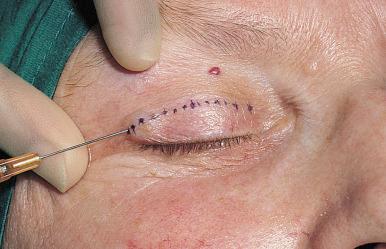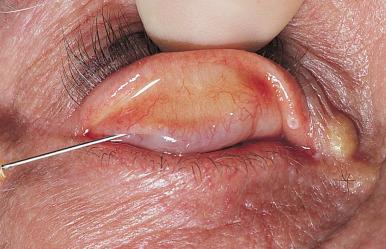Physical Address
304 North Cardinal St.
Dorchester Center, MA 02124
Local anaesthesia is very satisfactory for most ophthalmic plastic procedures. Children and some adults require general anaesthesia. Extensive procedures are more conveniently done under general anaesthesia because of the volume of local anaesthetic that would be required.
A mild sedative may be beneficial for anxious patients having surgery under local anaesthesia. Temazepam 10 mg orally, 2 hours before operation, is usually sufficient. An alternative is intravenous propofol. Day patients are advised not to travel home alone if they have had premedication. Other premedication drugs may be used.
Anaesthetic eye drops such as amethocaine 1% or oxybuprocaine (Benoxinate) 0.4% are given before skin preparation.
Lignocaine (xylocaine, lidocaine) 2% with 1 : 80,000 or 1 : 200,000 adrenaline gives excellent anaesthesia for local infiltration or regional block. After injection the anaesthetic is effective within 5 minutes and lasts for about an hour. A mixture of equal volumes of lignocaine and bupivacaine (Marcaine) 0.5% prolongs the anaesthesia. The addition of hyaluronidase promotes diffusion of the anaesthetic but increases its absorption and is generally not necessary. The adrenaline improves haemostasis. Warming the anaesthetic to body temperature reduces the discomfort of the injection.

Having marked the incision, inject local anaesthetic slowly into the subcutaneous layer (and the submuscular layer for deeper dissection) deep to the mark. Alternatively, inject a bolus of anaesthetic laterally and massage it across the lid. Large volumes are not required and they distort the tissues.

Become a Clinical Tree membership for Full access and enjoy Unlimited articles
If you are a member. Log in here